America needs new states.
https://www.nytimes.com/2021/07/07/opinion/us-states.html
America needs new states not only to provide representation for those living in territories but also more urgently to provide adequate representation to those who have congressional representation but whose votes perversely carry less weight because of their state’s size.
Rather than re-invade Mexico, the best way to create new states is to break up gigantic super-states like California, New York, Texas, and Florida.
And America needs new states to improve the internal governance of the states and the country. We need new states — and the place to start is to carve them out of the largest states that already exist.
Representation in the Senate is grotesquely skewed toward smaller states.
In the Senate, each state has two senators.
This favors smaller states like Wyoming, which has about 600,00 citizens, at the expense of large states like California, which has 40 million citizens.
This trend is worsening as more Americans move to big states that have big cities and big opportunities.
Since 1980, about 40 percent of America’s population growth has accrued to only three megastates: California, Texas and Florida. California has more than eight times the population of the median U.S. state; on its own, Los Angeles County would be the 10th-largest state in the union. The four largest states by population now make up roughly one-third of the population of the entire United States — more than the smallest 34 put together.
Those four largest states have only eight senators, while the 34 smallest states have a supermajority of 68.
Another reason to break up big states is to make them less powerful in relation to the smaller states.
At the same time, the sheer bulk of states like California and Texas gives them far greater influence than a typical state has. On issues like environmental regulation and education policy, these behemoths can shape or frustrate national policy by their unilateral actions in ways that smaller states cannot easily dissent from. Their key industries and interest groups, meanwhile, wield disproportionate influence in the national and state capitals.
So another reason to break them up is to reduce the power they exert over the country.
The disproportional representation in the Senate cannot be addressed through the law without altering the Constitution.
Because the smaller states dominate the national legislature, it seems unlikely that the Constitution would be re-written to empower the more populous states.
Article V forbids any amendment to the Constitution that would deprive any state of equal representation in the Senate without that state’s consent.
One reason to break up the largest states, then, is to give their citizens something closer to appropriate representation.
However, the Constitution would not have to be modified in order to break up big states.
No constitutional amendment would be required; per the terms of Article IV, creating states from a state that already exists would merely require the state legislature to vote to split up and for Congress to assent. And unlike consolidating smaller states, which would reduce their citizens’ representation, splitting up the large states would increase it, giving their voters a reason to be supportive.
There would be certain conditions for the splitting up of large states, such as a minimum population size and no gerrymandering.
“Gerrymandering” is the manipulation of the boundaries of an electoral constituency so as to favor one party or class.
Congress could help structure the process by setting a minimum size for new states (say, one-half the population of the median state, about 2.25 million) and requiring them to have territorial integrity and avoid partisan gerrymandering, all of which would help assure that the break up improved national governance. But carving the four megastates into three or more states each might have a host of benefits for their internal governance as well.
A minimum population size for new states might be reasonable considering that one of the main issues is that there are too many small states with too much senatorial power.
However, drawing state boundaries along political lines just might be the trick to get new states created.
The trick is to create a happy political divorce.
For example, New York City, with its population of 8.4 million, dominates New York state, with its population of 20 million.
At first, one might be forgiven for thinking that granting statehood to New York City would create a new state that would favor the Democratic Party.
For example, New York state consistently delivers its electors to the Democrat Party in presidential elections.
In fact, by simply glancing at a map of the 2016 presidential election one would probably conclude that New York state is a Democratic bastion.

However, a national map of the 2016 presidential election at the county level hints at something different from the stereotype of liberal New York state.
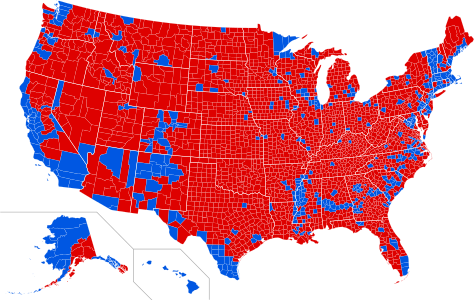
A map of voting patterns in New York state by county suggests that New York state minus NYC would be Republican.

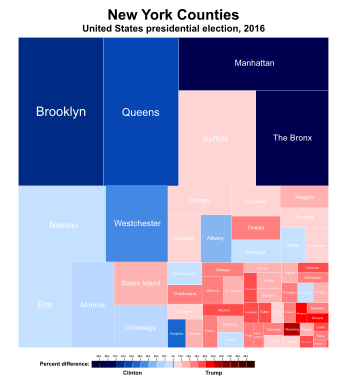
For citizens of New York state who live outside of NYC, voting in presidential elections might feel futile.
At the end of the day, NYC always decides that the state’s electoral college votes will go to the Democratic candidate.
Thus, granting statehood to NYC would reveal New York state to be the typical rural Republican state that it always was.
This might be a breath of fresh air for a landmass which has 12 million citizens who now live in the shadow of the “Big Blue Apple”.
This introduces a certain irony to Norman Mailer and Jimmy Breslin’s run for mayor on a joint ticket in 1969.
They ran on the platform of statehood for NYC.
If they had won and accomplished their agenda, they would have created a large Republican state.
https://en.wikipedia.org/wiki/New_York_City:_the_51st_State
Again, urban, progressive NYC becoming a state would benefit the Republican Party both in the Electoral College and in the Senate.
For the Republicans, it would mean two new senators and most of New York state’s current electors.
For Democrats, it would be a lesson in “Be careful what you ask for….”

Much the same is true of Chicago’s political domination of Illinois.
In 2016, Hillary Clinton received 55% of Illinois’ vote, while Donald Trump got 38%.
But it seems that Clinton’s decisive victory in Illinois was all about Chicago, with its massive population that is so out-of-step politically with the rest of Illinois.


New York City’s domination of New York state and Chicago’s political eclipsing of Illinois is exactly the converse of elections in Florida.
Florida seemed Republican in the 2016 presidential elections.
The reality is that in Florida in 2016, the election was close.
Trump got 49% of the vote and Clinton got 48%.
At the county level, Florida’s vote was split, with Miami’s strong support for the Democratic Party overwhelmed by the rest of Florida.


Voting patterns in Florida largely reflect a geographic divide.
On the one hand, there is urban central Florida (Orlando and Tampa) and developed coastal areas which trend toward the Democratic Party.
On the other hand, there are the rural interior areas which favor the Republican Party.

There have been proposals by politicians to break up Florida into two states, one in the north and one in the south.
However, such a division of Florida between north and south does not accurately reflect Florida’s messy political and geographic fault lines.
The proposals for breaking up Florida into two states seem to come from frustrated Democrats in Miami.
However, Florida is a magnet that draws Americans from cold-weather, high-tax states.
Eventually, Florida will grow its population and become more dense — and then tilt toward the Democrats.
So, for politicians in the Democratic Party, the lesson here is — again — Be Careful of What You Wish For.
Florida could be on its way to becoming another New York state or Illinois, that is, a state that delivers big time to the Democrats in the Electoral College.
https://en.wikipedia.org/wiki/List_of_U.S._state_partition_proposals
Politicians in the South Florida metropolitan area have made proposals to split Florida into two states – North Florida and South Florida. One such proposal was made in 2008 by the North Lauderdale commissioners.[21] The proposal was revived in 2014 when South Miami City Commission passed a South Florida state resolution on October 7 and sent it to counties in the proposed state’s area.
Texas is similar to Florida in that its major population centers are strongholds of the Democratic Party but are scattered and not concentrated in one spot like Chicago or NYC.
In particular, three large cities in eastern Texas that voted Democratic in the 2016 election form the three corners of a pyramid:
- Dallas in the north,
- Houston on the western coast, and
- San Antonio in the southwest (below Austin).
Unfortunately, this triangle does not form a coherent block because the area between the three cities is less dense in population and is generally Republican.
However, areas of Texas along the border with Mexico also voted Democratic in the 2016 Democratic election, in which Trump received 52% and Clinton 43% of the vote.
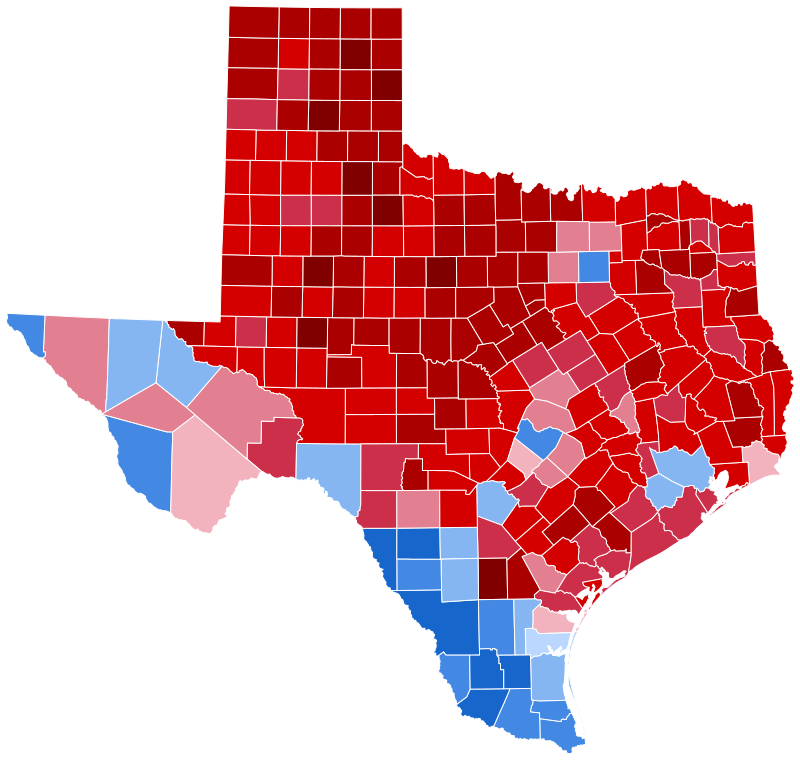
These counties on the Mexican border are the least populated areas of Texas.


Apparently, Texas has a long history of contemplating its own division into new states.
https://en.wikipedia.org/wiki/Texas_divisionism
Texas divisionism is a mainly historical movement that advocates the division of the U.S. state of Texas into as many as five states, as some considered to be statutorily permitted by a provision included in the resolution admitting the former Republic of Texas into the Union in 1845.[1]
Texas divisionists argue that the division of their state could be desirable because, as the second-largest state in the United States in both area and population, Texas is too large to be governed efficiently as one political unit or that in several states, Texans would gain more power at the federal level, particularly in the U.S. Senate since each state elects two senators, and by extension in the Electoral College in which each state gets two electoral votes for their senators in addition to an electoral vote for each representative. However, others argue that division may be wastefully duplicative by requiring a new state government for each new state.
Texans might enjoy talking about seceding from Texas as much as they enjoy talking about seceding from the USA.
(“Bernie”, 2011, the five states of Texas)
As the population of Texas grows, in particular urban areas of Texas, its culture and political culture will become more like that of Democratic states.
Hence the complaint “Don’t California my Texas.”
A Republican Texas might be preserved by slicing off major Texan cities, such as:
- Houston (2.3 million people)
- San Antonio (1.6 million) + Austin (1 million)
- Dallas (1.3 million) + Fort Worth (900K)
Of course, the secession of major Texan cities and their metro areas would mean sacrificing massive wealth, as well as creating new seats for Democratic senators.
But without the secession of growing cities, the long-term trend is for all of Texas’s Electoral College votes to go to the Democratic Party.
To limit the number of new senators, perhaps these three urban regions could become just one new state.
Like Michigan or the Hawaiian islands, they would be one state that is not geographically contiguous.
In some accounts, these three Texan metro areas already form a single coherent “mega region”.
In other accounts, they do not.
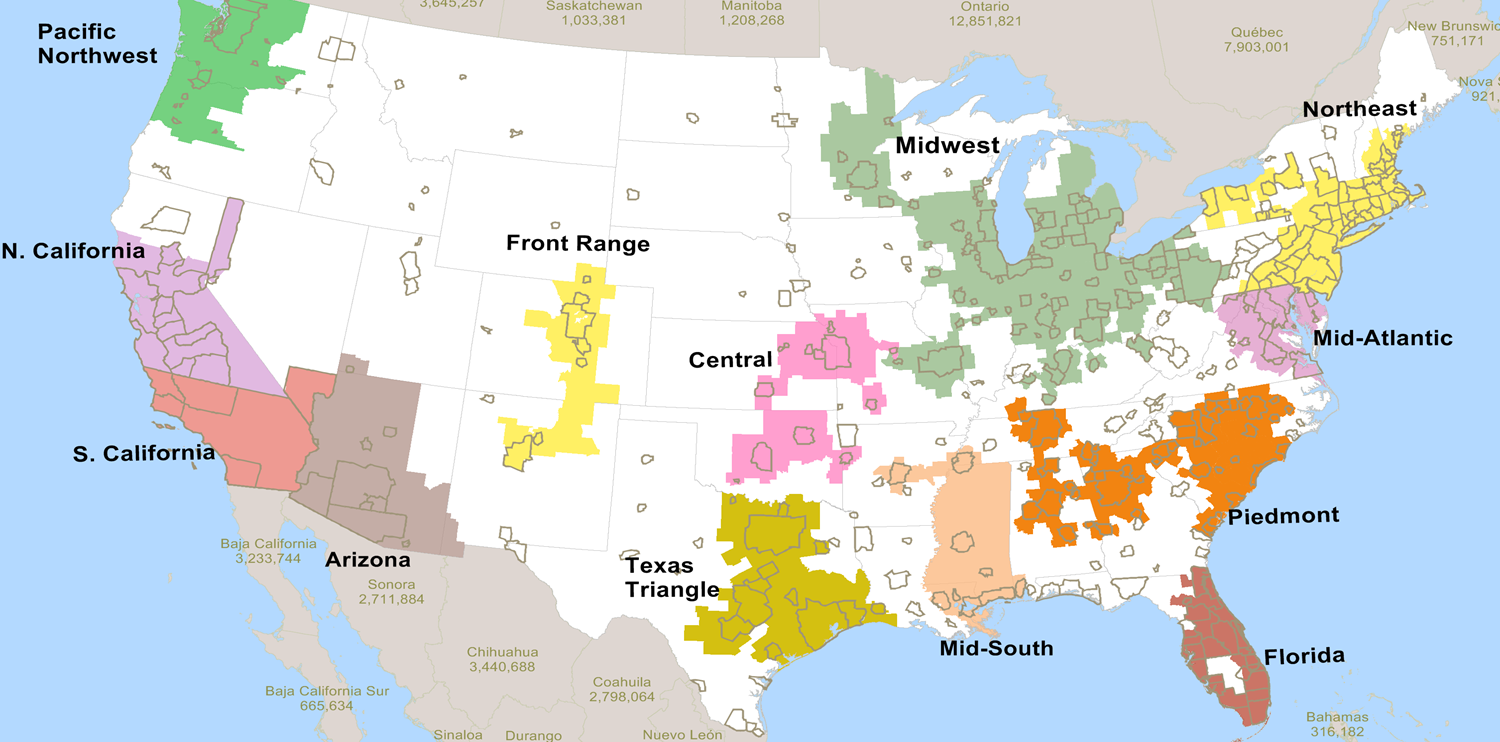
![My MegaRegions of the United States Map [OC] [3509x2478]: MapPorn](https://external-preview.redd.it/97DHMNiEkom8-_fagkx2TDJNDbWch12J_Y1J3zqUTII.png?auto=webp&s=c952499df07f2ca3206bae38cf94cffedee82207)
California is a different story altogether compared to New York, Illinois, Florida, or Texas.
Whereas those latter states have major cities that are islands of progressive politics in a sea of rural conservatism, California is overwhelmingly Democratic.
In the 2016 election, Hillary Clinton won in a landslide, with 62% of the votes compared to Trump’s 32%.

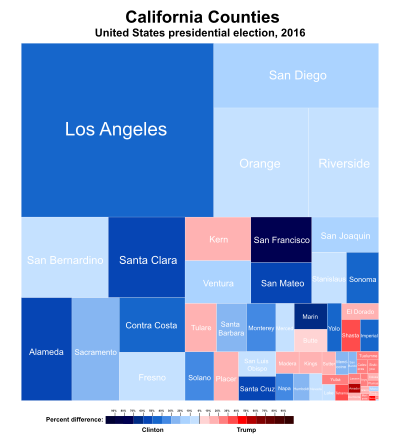
The California counties that voted Republican have low population density.

There have been efforts to split up California.
https://en.wikipedia.org/wiki/Partition_and_secession_in_California
California, the most populous state in the United States and third largest in area after Alaska and Texas, has been the subject of more than 220 proposals to divide it into multiple states since its admission to the United States in 1850,[1] including at least 27 significant proposals in the first 150 years of statehood.[2] In addition, there have been some calls for the secession of multiple states or large regions in the American West (such as the proposal of Cascadia) which often include parts of Northern California.
Here are a few of the most recent proposals.
From 2003:

From 2013:

From 2018:

None of these maps correspond to maps that illustrate California’s population density or political affiliation by county.
That is peculiar, because the urban-rural political divide is what secession proposals in other states are all about.
The leadership of both political parties in California hate the idea of breaking up the state because it is a unrealistic, unpopular, and would serve no purpose.
Importantly, California has the fifth largest economy in the world, and is thus highly advanced and integrated, and secession would mess things up economically.
The many proposals to break up California are thus akin to the abortive introduction of New Coke in 1985.
Nobody actually wants it except for a few characters who keep championing it.
California’s penchant for fabricating proposals for dismembering itself are therefore somewhat of a mystery.
But it seems that California is all about creativity, and this is an example of it.
- People immigrate to America to remake their lives, and
- Americans move to California to reinvent themselves, and
- Californians love making random, colorful maps of a post-California California.
https://en.wikipedia.org/wiki/Cal_3#Opposition
There are thus only three states in the examples given where creating new states from major cities makes some sense, might be popular, and would be viable.
- Chicago cleaved from Illinois,
- New York City divorcing itself from New York state, and
- the triangle of major cities in Texas breaking off on their own.
Again, if Chicago or NYC were to break off and become a new state, Illinois or New York state, respectively, would probably become a classic rural “red” state that mostly votes Republican.
- The Democratic Party would not gain any more Senate seats than it already has.
- The number of electors in the Electoral College dedicated to Democrats would shrink.
- The Republicans would gain two new Senate seats in either (or both) Illinois and New York state, and gain electors, as well.
In negotiating statehood for Chicago or NYC, the Democrats would be mollified if new “blue” Democratic states were created from major cities in Republican strongholds like Texas.
So, if New York City were trying to become a new state, it would help if Houston were also making the same effort for itself.
Compromise is crucial.
Baseball, jazz, and the Constitution are all about improvisation, but they are also all about compromise.